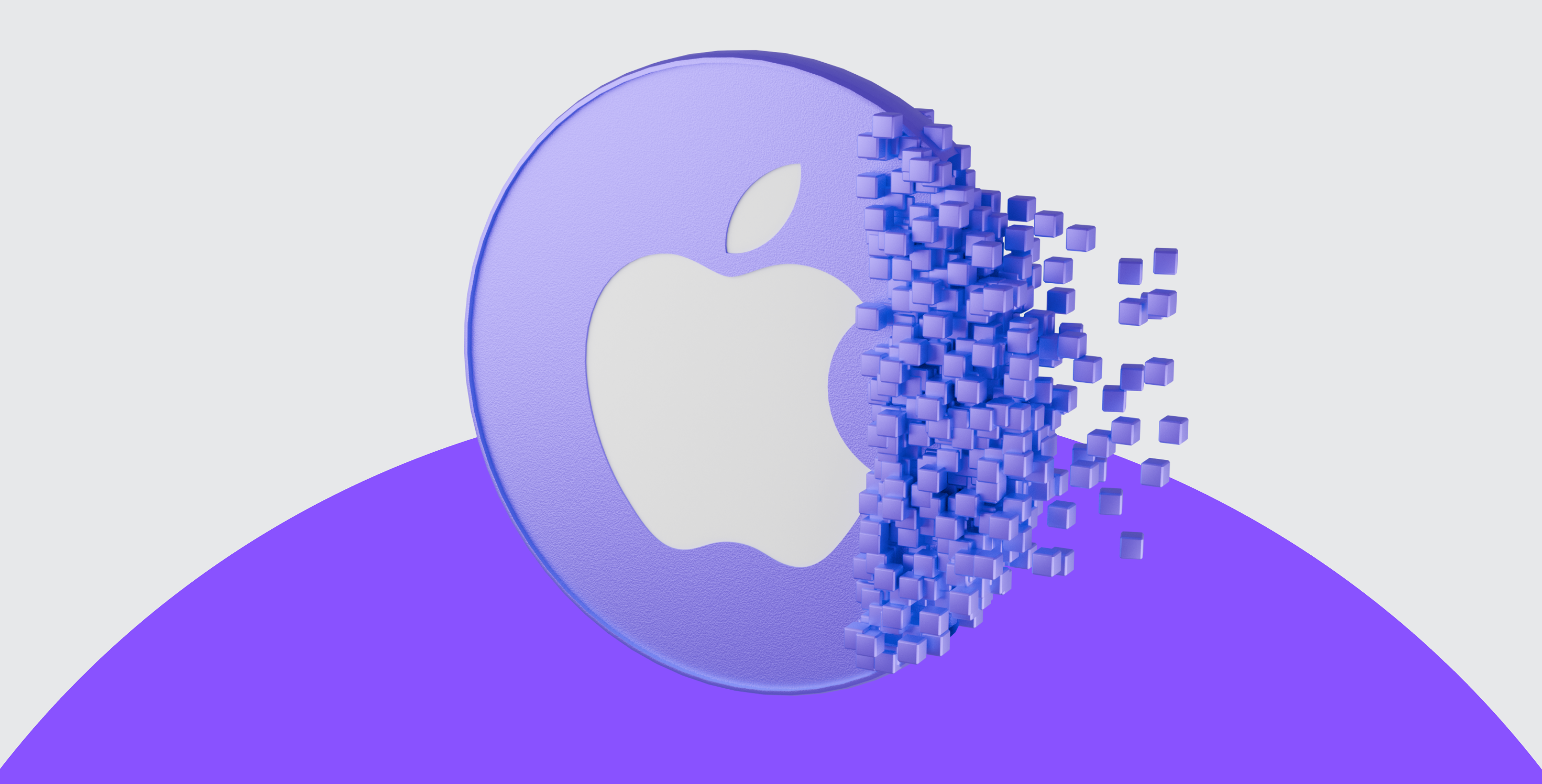Why Bitcoin’s Design Makes it More Valuable

The rand turned 60 this year. It’s a sobering thought but a basket of goods costing R100 in 1961 would today cost R9 700. Compare that to the deflationary power of bitcoin...
Between 1961 and 2021, prices of everyday goods increased by almost 97 times, according to Statssa. What this means is that a basket of goods and services costing R100 in 1961 would have cost almost R9,700 in 2021.
That amounts to roughly 8% inflation rate per year. Expressed another way, R100 in 1961 is worth roughly 67c today.
Fresh chicken cost 70c a kilogram in 1961 compared with R58 in 2020. A dozen large eggs was 34c in 1961 and is presently R38.
Even the US dollar, the world’s reserve currency has lost more than 90% of its real purchasing power since 1913.

Most people view inflation as the prices of goods and services becoming more expensive over time but what this actually means, when looking at it from a different perspective, is that currencies are becoming less valuable relative to the same real-world goods and services. A chicken or dozen large eggs are still the same items today as they were back in 1961 – they haven’t become more valuable.
Bitcoin - A Deflationary Asset
Bitcoin has only been around since 2010 and prices in rands are only available from 2013. If we take R100 basket of goods from 1961 and inflate that by 8% a year, the same basket in 2013 costs roughly R5 000, equivalent to nearly 5 bitcoin at the time.
Today, the same basket of goods would cost R9 700, but that’s just 0.06 bitcoin.

“This demonstrates the remarkable deflationary power of bitcoin,” says Sean Sanders, CEO of crypto investment platform Altify. “This also shows why bitcoin and cryptocurrencies should form part of every portfolio, even if just a small component, because of its proven ability to vastly outpace the rate of inflation and the general devaluation of not just the rand, but all fiat currencies.”
Sanders points out that the price of bitcoin has increased from R1 000 in March 2013 to its current level around R750 000 – a 750-fold increase in value over eight years.
The same deflationary effect is visible when comparing bitcoin to the US dollar and other currencies. The US dollar has been depreciating in value by about 3.4% a year since the end of the Second World. To be more technical, this means that $100 has lost $3.40 in real purchasing value every year on average. In fact, the buying power of $100 has fallen to $7.45 since 1947 through inflation.
Bitcoin since inception has appreciated by nearly 200% compounded a year, making it the fastest growing asset of the last decade and arguably of all time. This remarkable growth is largely due to its growing adoption worldwide and the fact that there will never be more than 21 million bitcoin issued.
“If you compare the supply characteristics of bitcoin relative to say the USD, you have a programmatic hard cap on the number of bitcoin’s that will ever be in circulation and you also have a deflationary growth rate of new bitcoins. Since every four years the inflation rate of Bitcoin gets automatically halved. The USD on the other hand has no maximum limit to the number of dollars that can be printed and the rate of money printing, which is the inflation rate of USDs, is sitting at an all-time high. In fact, $9 trillion US dollars were printed in 2020. That’s 22% of all USD that were in circulation at the start of 2020,” says Sanders.
“When you increase the number of rands, dollars or pounds in circulation without a corresponding increase in the number of goods you get inflation. Currencies become worthless and over the long-term they become truly worthless.
“This explains why companies like Tesla, MicroStrategy, Stone Bridge, and Jack Dorsey’s payment company Square are putting some of their cash reserves into bitcoin,” says Sanders. “They are playing the long game.”
When you’re looking at the relative demand side of the equation, worldwide demand for bitcoin and other cryptocurrencies has increased exponentially relative to the USD or any other fiat currency. There’s well over 100 million unique active bitcoin wallets globally and the value of the overall crypto market is now approaching 15% of gold’s worldwide value which is driving further adoption among blue-chip companies.
At a recent conference organised by MicroStrategy CEO Michael Saylor to explain the logic of bitcoin as a store of value to CEOs, several presenters emphasised the risk of holding cash over the long term.
“Cash is now a liability, it’s no longer an asset. You’re guaranteed to lose money every year when holding cash. That has profound implications for corporate balance sheets,” said Ross Stevens, CEO of Stone Bridge, which has been shifting cash into Bitcoin since 2017.
“Learning about bitcoin is like learning a foreign language. I now think in bitcoin. Bitcoin is not volatile – fiat currencies like USDs are volatile. Fiat currencies keep getting cheaper in bitcoin terms,” adds Sanders.
“The corporate adoption of bitcoin is accelerating, and we are just at the start of a trend that is likely to continue for several years. Bitcoin is now widely regarded as a safe store of value, and is often referred to as digital gold. You can see the impact this strategy of moving cash reserves into bitcoin has had on the share prices of Tesla, Square and MicroStrategy. Many people are buying these shares as a proxy for bitcoin.
“The next big trend to look out for as companies look for better ways to preserve the value of assets is corporate investment in Ethereum, which is the second biggest cryptocurrency in terms of market cap. I expect we’ll see a few announcements in the course of this year of companies moving some of their treasury assets into Ethereum.”
How Do I Invest?
If you are working within an established, reputable crypto investing platform like Altify, which is backed by JSE listed Sabvest, you can effortlessly invest in both bitcoin and Ethereum’s native Ether token. Altify was launched to make it secure and easy to invest in cryptos like bitcoin and Ethereum and, through its investment platform, to gain exposure to ready-made baskets of cryptocurrencies that they call “Bundles” for as little as R500. Altify charges no sign-up, monthly account or subscription fees, but rather a simple 1% transaction fee for both buys and sells.

The Top 10 Equal Crypto Bundle available through Altify spreads your investment equally over 10 largest cryptocurrencies – which covers about 85% of the crypto market when measured by market capitalisation - with each having a 10% weighting. By default, you are buying the ten biggest success stories in the crypto space. The weightings are adjusted monthly to ensure no crypto exceeds a 10% weighting, and that can be a major advantage as other constituents of the bundle (like Ether, Chainlink, Cardano and Polkadot) have outperformed bitcoin’s amazing 300%-plus rise last year.

The Ecosystem Crypto Bundle tracks those cryptocurrencies that enable smart contract functionality and include several cryptocurrencies that are looking to challenge Ethereum’s smart contract dominance. Smart contracts use the blockchain to allow peer-to-peer transactions without the need for third party verification. This Bundle comprises cryptocurrencies that enable developers to build applications on top of their blockchains, much like how developers build mobile apps on top of the Apple mobile iOS operating system. The cryptos in this bundle include Ethereum, Cardano, Tron, Neo, and EOS.
Altify also offers a Payments Crypto Bundle, which provides exposure to the largest five payment-focused cryptocurrencies looking to compete with government-issued fiat currencies to make digital payments cheaper, faster and more global. These cryptos include bitcoin (BTC), Ripple (XRP), Litecoin (LTC), Bitcoin Cash (BCH) and Stellar (XLM).
You can also buy and sell USDC (a “stablecoin” fully-backed by the US dollar) and a physical gold-backed token called PAX gold which provides legal ownership of an ounce of gold through Altify’s online platform.




